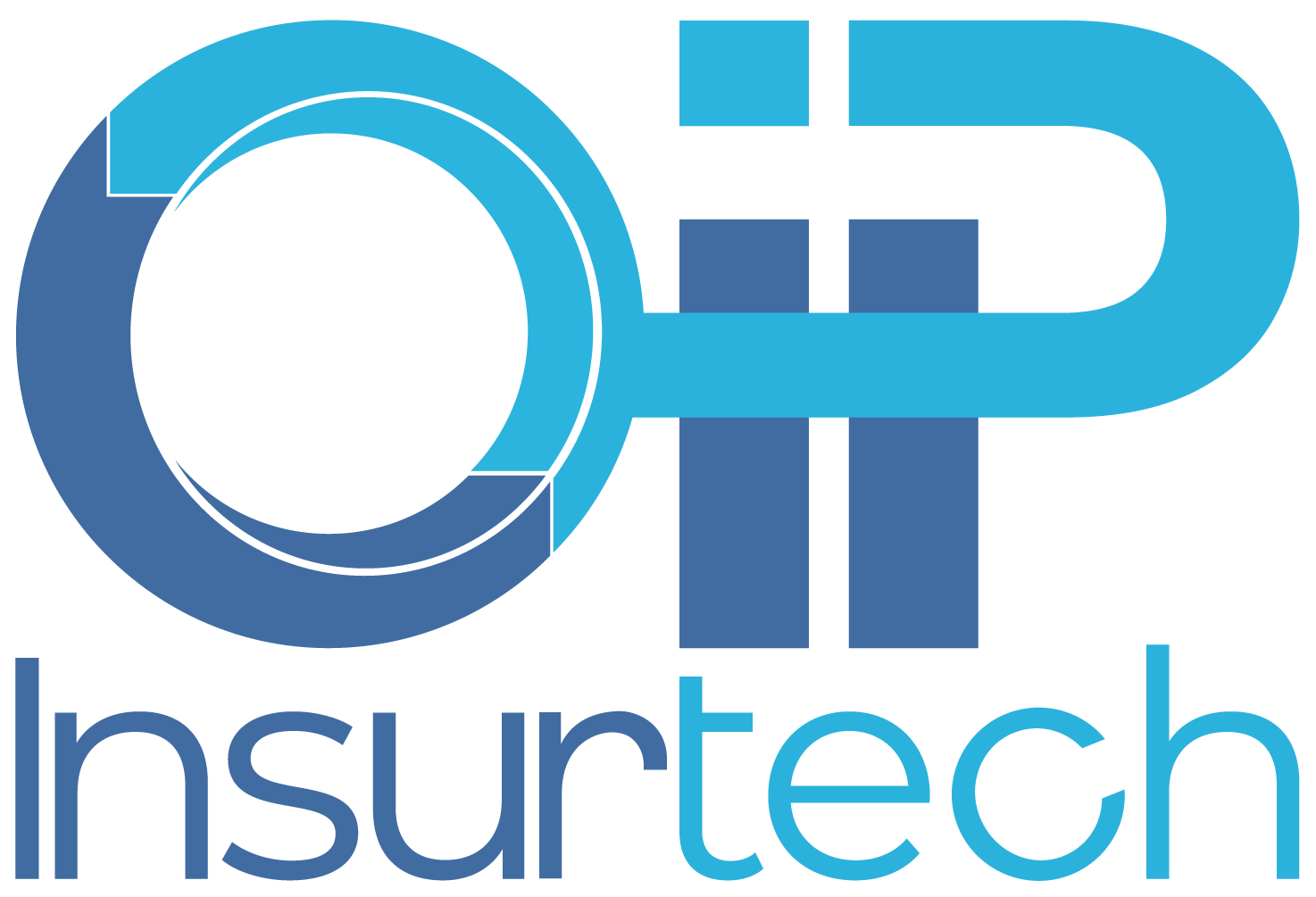Revolutionizing Insurance Workflows: How Automated Document Extraction Saves Time and Cost
Insurers are still overwhelmed with paperwork – encompassing submissions, claims, endorsements, and numerous other documents – all of which require manual data entry and meticulous review. The traditional process is tedious, costly, error-prone, and slow. In fact, manual data entry can lead to error rates of around 1%, which can potentially result in compliance issues and costly rework. At a time when nearly 80% of insurers acknowledge they’re struggling to effectively manage unstructured data such as PDFs, emails, and scanned forms, the need for a better solution is clear.
As competition intensifies and customer expectations for speed and accuracy rise, insurers are increasingly turning to automation – specifically, automated document extraction – to enhance operational efficiency. A recent industry survey by Conning shows that 77% of insurance leaders have already begun implementing AI-driven solutions to streamline document workflows and maintain competitiveness. Tools leveraging advanced AI and Intelligent Document Processing (IDP) significantly reduce manual workloads by automatically capturing, classifying, and integrating data from documents directly into core systems.
Our in-depth article explains how automated document extraction transforms insurance workflows by significantly reducing costs, enhancing accuracy, and accelerating processing times, ultimately empowering insurers to thrive.
Why do insurance companies struggle with traditional document processing?
Time-consuming manual tasks
Underwriters and claims professionals often find themselves spending countless hours reviewing individual documents for relevant information. They manually copy data into multiple systems, verify entries, and double-check for missing fields – repetitive and error-prone actions that inevitably slow down policy issuance and claims settlement processes. As document volumes increase, manual tasks compound, stretching teams thin and diverting attention away from strategic, revenue-generating activities.
High operational costs
Manual document processing not only consumes valuable time but also drives up staffing expenses. Hiring, training, and supervising a dedicated data-entry workforce becomes costly, especially with turnover requiring continuous onboarding cycles. In a tight labor market, insurers often struggle to maintain adequate staffing levels to manage large volumes efficiently, which places additional pressure on existing teams and budget constraints.
-
Staffing costs accumulate quickly with constant onboarding and training.
-
Employee turnover exacerbates inefficiencies, restarting the training cycle frequently.
-
Operational overhead rises with the administrative effort required to manage large data-entry teams.
Compliance & risk
Insurance paperwork regularly involves sensitive, regulated information, including personal identifiable information (PII) and detailed policyholder data. Manual handling increases the likelihood of mishandled records, inconsistent documentation practices, and inadvertent breaches of privacy regulations. A single oversight, such as misfiling documents or missing regulatory checkpoints, can lead to costly audits, regulatory penalties, and damage to an insurer’s reputation – highlighting the urgent need for robust, automated document management solutions.
The Deloitte study says that regulatory compliance and data privacy are among the top reasons insurers now prioritize technology-driven document handling processes.
What is automated document extraction in insurance?
Automated document extraction involves using advanced technologies – like OCR (optical character recognition), AI/ML (artificial intelligence and machine learning), RPA (robotic process automation), and IDP (intelligent document processing) – to automatically identify, capture, and classify key insurance data, significantly reducing manual involvement.
In practical terms, these systems:
-
Identify and extract critical information from diverse documents, such as applications, claim forms, endorsements, and loss runs.
-
Categorize and structure data directly into insurers’ core systems, enabling seamless integration.
-
Accelerate processes like risk clearance, loss run analyses, underwriting assessments, and policy updates, removing manual intervention bottlenecks.
While human oversight remains important, automation significantly enhances speed, consistency, and accuracy, enabling insurers to achieve far greater productivity than traditional methods.
How does it differ from standard OCR?
Traditional OCR converts printed text into digital formats, typically offering a basic, searchable PDF or plain text file. By contrast, automated document extraction solutions not only digitize documents but also intelligently interpret content. They identify specific data fields, classify documents by type (such as differentiating a submission from a claim), and feed structured data directly into underwriting or claims management systems.
According to Gartner, intelligent document processing platforms can reduce manual processing efforts by up to 60%, clearly highlighting the step-up from basic OCR functionality.

Insurance use cases where automated document extraction makes a difference
Automated document extraction significantly impacts various stages of insurance workflows, bringing efficiency and accuracy to traditionally manual processes.
New business submissions
Insurers regularly face a high volume of new business applications that require meticulous review and manual data entry. Automated extraction technology streamlines this task by accurately capturing critical data from submission documents and populating underwriting systems directly.
-
Accelerates quoting: Minimizes turnaround times, allowing underwriters to focus on risk evaluation rather than data input.
-
Boosts accuracy: Reduces human errors caused by repetitive data entry tasks.
Loss runs and claims handling
Loss runs contain detailed historical data that underwriters and claims professionals depend upon for accurate assessments. With automated extraction:
-
Complex documents are parsed rapidly, ensuring adjusters quickly access structured, reliable data.
-
Insurers experience dramatically reduced processing times for claims, resulting in quicker settlements and enhanced client satisfaction.
In fact, insurers adopting automated document extraction can typically handle claims data in minutes rather than hours or days.
Policy issuance and endorsements
Policy management – ranging from new issuances and endorsements to periodic updates – often involves cumbersome documentation handling. Automated extraction simplifies this by instantly identifying and classifying key data fields within complex documents like policies, endorsements, or SOVs (Statements of Values).
The results are:
-
Faster policy processing and client updates.
-
Reduced error rates, enhancing compliance and customer satisfaction.
ETL and system integrations
Transferring data between legacy systems or integrating with modern platforms presents significant challenges due to data inconsistency and manual reconciliation requirements. Automated extraction addresses this directly by:
-
Accurately pulling and transforming essential data into standardized, structured formats.
-
Facilitating seamless integration with APIs, RPA, and other workflow automation tools.
-
Eliminating the need for exhaustive manual curation and dramatically reducing errors.
What you get is smooth migration, consistency of data across systems, and a unified data environment that supports better strategic decisions.
Practical benefits: time and cost savings
Automated document extraction isn’t just about replacing manual work with machines – it’s about reclaiming time, boosting performance, and unlocking long-term operational value.
One of the most immediate advantages is the reduction in manual labor. For insurers handling thousands of documents each month, automation can eliminate hundreds of hours typically spent on data entry. This frees up skilled professionals to focus on higher-impact tasks like risk analysis, broker relationships, or customer service.
It also improves turnaround times significantly. Instead of waiting days for underwriting decisions or claim approvals, teams can make faster moves, leading to quicker quotes, faster settlements, and a better experience for the insured. This responsiveness gives insurers a serious edge in a competitive market where speed matters.
Another major win? Data quality. Manual processes are prone to duplication, inconsistencies, and rework.
With automation:
-
Information is consistently extracted and validated before it reaches your core system.
-
Fewer mistakes lead to smoother audits, cleaner portfolios, and stronger compliance.
-
Teams spend less time fixing errors and more time moving forward.
Together, these improvements translate into measurable cost savings – whether by reallocating staff, accelerating revenue, or simply avoiding the hidden expenses of errors and delays.
Choosing the right automation partner
Adopting automated document extraction is only half the equation – the other half is choosing the right partner to implement it effectively. Not all solutions are built the same, and in insurance, the difference between a good tool and the right one lies in the details.
What to look for:
-
Industry expertise
A solution built for “any industry” often works for none. Insurance operations come with nuanced workflows, regulatory expectations, and document types. Your automation partner should understand the difference between a dec page and a schedule of values—and how both impact risk. -
AI that learns
The best tools get better with time. Look for platforms that use machine learning to continuously adapt to your document types, layouts, and terminology. This ensures ongoing accuracy as your business evolves. -
Seamless integration
Whether you’re working with modern APIs or legacy systems, the tool needs to slot into your environment—not the other way around. Bonus points if the vendor offers RPA support for platforms that aren’t API-friendly. -
Security-first mindset
Document extraction means handling sensitive client information. That’s why data encryption, access controls, and compliance with privacy regulations (like HIPAA or GDPR) shouldn’t be optional – they should be built-in.
And finally, it’s not just about software. You need a partner – someone who offers onboarding support, adjusts to your workflow, and collaborates with your team to ensure success.
Scalability and flexibility
The volume and variety of insurance documents is no joke. From structured ACORD forms to multi-page loss runs filled with complex exposure data, your document extraction tool needs to do more than “get by.” It must scale with your business – and adapt to the chaos that comes with real-world insurance operations.
Some systems handle structured data well but fall apart when presented with handwritten notes, email threads, or scanned PDFs in unpredictable formats. That’s why flexibility matters. Whether it’s a one-page application or a 90-page submission packet, your solution should parse, interpret, and route data without breaking stride.
Scalability also matters when the floodgates open – say, during renewal season or CAT events. A good solution doesn’t just process more data; it does it fast and reliably, even when volumes spike. With cloud infrastructure and smart workload balancing, modern platforms should be able to handle thousands of documents without slowing down your operations.
If your current process breaks under pressure or forces you to hire additional help to stay on top of submissions, it’s not scalable. Automation should be your lever for growth – not just your Band-Aid during busy weeks.
Human-in-the-loop option
Even the best automation can’t always account for the nuance baked into insurance. Some endorsements are messy. Some brokers phrase things in a way only a seasoned underwriter would understand. That’s where a human-in-the-loop (HITL) model makes all the difference.
Think of it as a safety net – automation handles the bulk of the work, and trained insurance professionals step in only when a document triggers a flag or exception. The blended approach provides the best of both worlds:
-
Speed and scale from automation
-
Accuracy and nuance from human review
It’s especially important when dealing with high-value policies or non-standard submissions where judgment matters as much as data. Instead of reworking documents later or missing critical details, HITL ensures everything’s reviewed in context before decisions are made.
The right partner gives you the option to toggle between full automation, HITL, or a hybrid setup depending on volume, task complexity, or client segment. That flexibility lets you fine-tune your operations without compromising accuracy or speed.
Why OIP Insurtech stands out
Most document extraction tools are built by tech teams trying to “learn” insurance. OIP Insurtech flipped that model. We started in insurance and built tech to solve the problems we knew firsthand.
Our teams include former underwriters, claims professionals, and operations leads who’ve spent years inside insurance desks. That insider view shapes every feature and every workflow we develop. It’s not theory – it’s built from lived experience.
We’re not interested in offering yet another generic automation product. We aim to provide operational clarity and remove the daily friction that slows your teams down. Our deep industry understanding lets us build solutions that plug directly into the way insurers actually work – not how outsiders think they work.

How NT Extractor Saves Time and Cost
After years of witnessing firsthand where conventional tools fail, we poured our frontline insights into building a robust solution: NT Extractor.
What is it?
It’s more than a basic OCR add-on – a comprehensive platform designed to tackle everything from initial submissions to final policy updates. The software continuously learns from each document it processes, achieving high levels of accuracy (up to 99%) when reading submissions, loss runs, or complex endorsements. It supports both API integrations for modern systems and RPA approaches for legacy setups, ensuring you can embed it seamlessly into your existing workflow.
Speed and real-time clearance
Insurers often struggle with bottlenecks during peak submission periods. NT Extractor keeps your underwriting pipeline moving by extracting and classifying data within seconds. Underwriters can quote more rapidly because the information they need shows up in the system almost instantly, meaning no more scrolling through PDFs or manually keying repetitive fields.
Claims data extraction
When it comes to claims, NT Extractor parses loss histories and relevant forms with minimal human oversight. Adjusters can start evaluating claims right away instead of chasing down missing details. Faster turnaround not only accelerates settlements but also sharpens your risk analysis capabilities.
Policy updates made simple
NT Extractor automatically identifies key details in documents like dec pages or SOVs, then feeds them directly into your system for immediate policy issuance or endorsement changes. There’s no need to hunt for clauses or verify every figure—our solution handles the heavy lifting so your team can finalize coverage sooner.
User-friendly AI with straightforward onboarding
Despite its powerful AI engine, NT Extractor is built to be user-friendly. Many clients get up and running quickly, with our team providing hands-on guidance for initial configurations. Once in place, the system adapts to your unique document templates and business rules, delivering the accuracy that only comes from technology developed by people who’ve navigated insurance operations at the ground level.
Final verdict
Automated document extraction is poised to become a core standard in insurance, allowing organizations to operate with speed, precision, and agility. Early adopters stand to gain a competitive edge, benefiting from faster turnarounds and lower administrative overhead.
Key takeaways
- Lower operational costs: Automating document extraction reduces reliance on manual entry, saving time and money.
- Faster turnaround times: Quoting, underwriting, and claims processing benefit from quicker data entry and streamlined workflows.
- Higher data accuracy: Fewer human errors mean fewer reworks, smoother audits, and better decision-making.
- Industry expertise from OIP Insurtech: Our frontline insurance experience ensures solutions that genuinely address day-to-day challenges.
- NT Extractor: Built by people who understand the business, NT Extractor delivers speed, accuracy, and straightforward integration for your most complex workflows.
Want to learn more? Send a message to our team and see how OIP Insurtech and NT Extractor can reshape your insurance operations.

